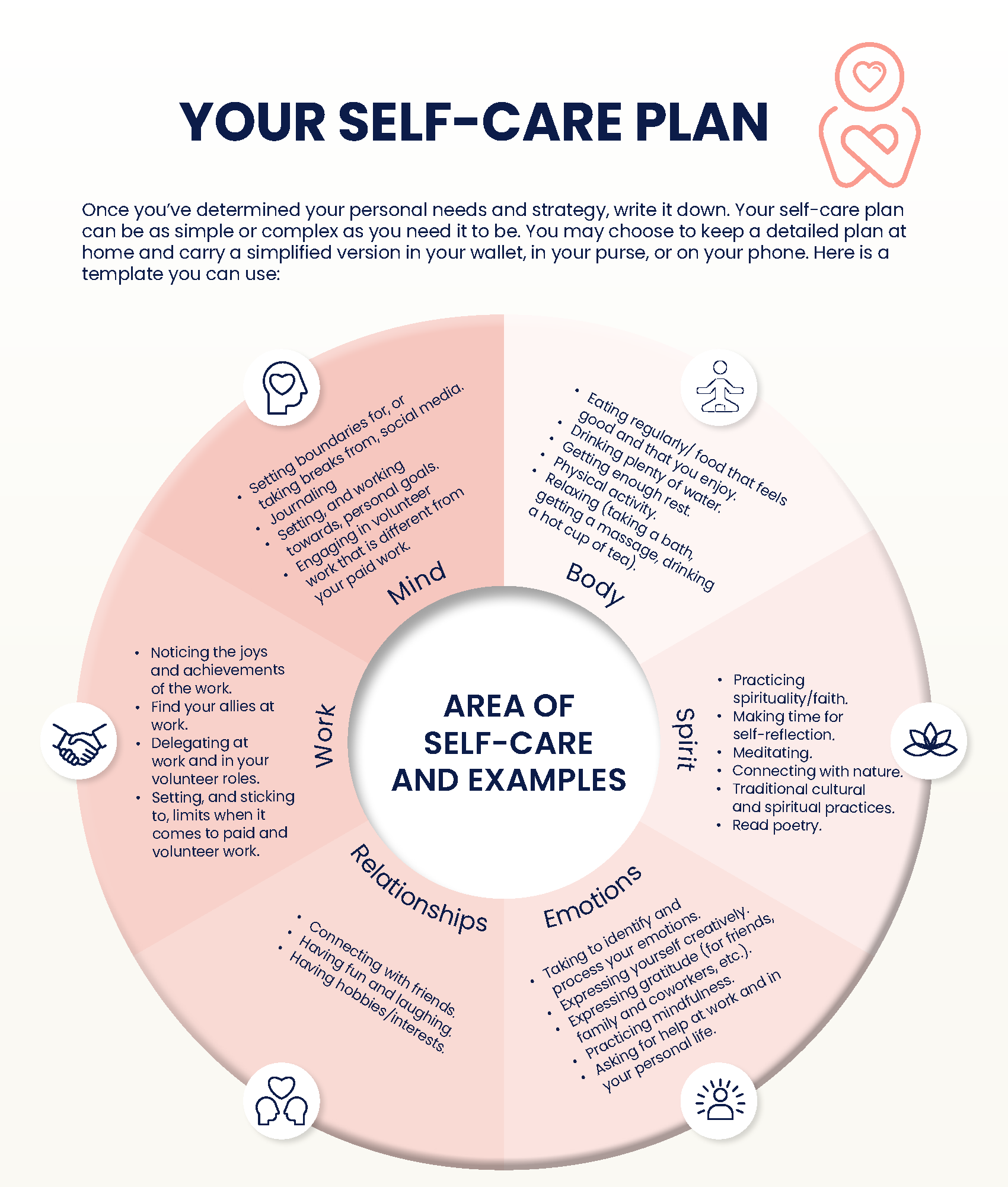Build a Self Care Plan
“Self-care is about self determination, you define how you will take care of yourself and what your needs are. Using a harm reduction approach means that we look at the ways we cope not from a bad or good lens. It is recognizing that how we deal with trauma might not always be nourishing for us; we might be able to cope in safer ways. Harm reduction is trying to think of ways we can be in control of our choices and make the best decisions we can in every situation. It is about honouring the ways we survive under systems we did not create.”
-Caring For Yourself is a Radical Act, Artreach.org Authored by Farrah Khan
Building A Self-Care Plan
Self-care is made up of the practices we deliberately engage in on a regular basis to maintain and enhance our health and well-being.
Your self-care plan can be as simple or complex as you need it to be. You may choose to keep a detailed plan at home and carry a simplified version in your wallet, in your purse, or on your phone.

Emergency Self-Care
It can also be helpful to have strategies to ensure that you practice self-care in times of heightened stress. If you develop a plan in advance, it will be there when you need it.
Identifying your Self-Care Needs
Take a moment to consider what you value and need in your everyday life (daily self-care needs) versus what you value and need in the event of a crisis (emergency self-care needs).
Self-care goes far beyond your basic physical needs: remember your mind, emotions, body, and spirit.
Reflection Activity:
Make a list of questions to ask when you are not OK. Once you have made that list, click the “Question List” button to get even more ideas. If you are not registered, simply review the list for more information.
Organizational strategies to foster mental and physical wellbeing
Think about current care practices that your workplace builds into daily or weekly routines. What has worked? What has been challenging? Where are the opportunities to shift and change?
Here are additional ways in which organizations can foster the emotional and physical wellbeing of employees and/or volunteers.
- Provide staff and volunteers with the resources they need to do their jobs
- Ensure that staff and volunteers are/feel adequately supported (this can include effective supervision, team meetings, access to professional development)
- Train supervisors/managers in how to address employee/volunteer distress
- Facilitate conversations and/or trainings regarding workplace stress, trauma, and self-care
- Foster positive relationships in the workplace
- Incorporate humour and fun
- Practice open and clear communication
- Allow workers to say “no”
- Provide paid mental health days
- Offer free health and wellbeing activities at the workplace such as yoga, meditation or walking groups.
- Be alert to signs of heightened stress or workplace related trauma in employees, don’t wait for people to come forward
- Connect staff and volunteers with role models and/or mentors
- Give staff access to mental health supports (for example through a workplace health plan)
- Debrief stressful events automatically as a team
- Ensure that people’s workloads and volunteer responsibilities are varied and balanced